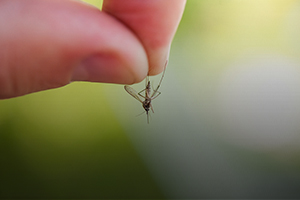Wiping Out Malaria…For Good?

In the past, we have reported on a number of applications for CRISPR-Cas9 gene-editing that target specific diseases, mutations or inherited conditions. Now researchers are looking to use the technology to wipe out malaria, but rather than targeting the disease, it would target the ability of the mosquitoes to reproduce.
Using the CRISPR method, scientists have created a “gene drive” – pieces of parasitic DNA that act like a computer virus to copy and paste themselves into the mosquito chromosomes. These chromosomes then get passed on to successive generations, effectively sterilizing the females. In one study of caged mosquitoes, the population was wiped out in twelve generations.
The urgency to find cost-effective strategies for controlling the spread of malaria is understandable. The World Health Organization estimates that there are more than 200 million cases of the disease each year. The nearly half a million deaths reported annually occur mainly among children under the age of five, and survivors often have lasting health problems.
However, there is some disagreement among scientists as to whether or not this is the ideal approach to disease control, as the risk of the gene drive spreading may be too great. Other studies are focused on using gene editing to make mosquitoes resistant to malarial parasites. And the development of a more cost-effective vaccine is still an option that requires more research.
For information: Andrea Crisanti, Imperial College London, Faculty of Natural Sciences, South Kensington Campus, London SW7 2AZ; phone: +44-(0)20- 7594-5426; email: a.drcrisanti@imperial.ac.uk; Web site: https://www.imperial.ac.uk/ or https://www.ncbi.nlm.nih.gov/pubmed/30247490